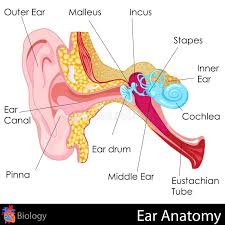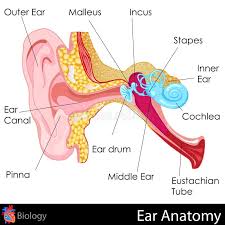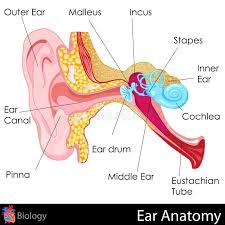Unit 1B: Sensation & Perception - AP Psychology
1/42
There's no tags or description
Looks like no tags are added yet.
Name | Mastery | Learn | Test | Matching | Spaced |
|---|
No study sessions yet.
43 Terms
What is sensation vs. perception and psychophysics?
Sensation:
The experience of sensory stimulation
Ex: “I see something”
Perception:
Creating meaningful patterns from raw sensory information
Ex: “I see a dog”
Psychophysics: the study of the relationship between physical stimuli and our experiences of them → how does our mind interpret different things?
What are the two types of processing data that you see?
Bottom-up processing (data-driven)
Beginning w/ stimulation of our senses, we interpret sensory info w/ our brains
Collecting data and clues as to what you’re looking at
Ex: I see a furry, 4-legged creature w/ a tail & identify this as a dog
Top-down processing (schema-driven)
Using our schemas, expectancies & past experiences, we interpret sensory info to construct deeper meaning
Comparing incoming data to what you’ve seen prior & waiting for a match
Ex: The dog is growling and foaming at the mouth and I realize it may have rabies, so I won’t pet it
**these two processes happen at the same time
How do we interpret “sensation”?
Receptor cells → receives incoming sensory info & are located in different locations and are specific to their location
Specialized cells that respond to a particular type of energy
These exist in your sense organs
These cells are located in your eyes, ears, etc
Ex: receptor cells in the eyes can only SEE and not SMELL b/c they’re not in the nose
What is the law of specific nerve energies?
Muller is the one who made the law
One-to-one relationship between stimulation of a specific nerve and the resulting sensory experience
Ex: applying pressure w/ your finger to your eye results in a visual experience
What are sensory thresholds?
Absolute threshold
The minimum amount of energy that can be detected 50% of the time
When the limit is reached, something happens
Ex: at what point can you hear the presence of a sound?
What is a sensory adaptation?
An adjustment of the senses to the level of stimulation they’re receiving
Rods & cones become sensitive to the few light waves there are in a place → ex: being in a dark place, rods and cones become desensitized to the decreased amount of light waves
Sensory adaptations applies to all receptors
What is the difference threshold?
The smallest change in stimulation that can be detected 50% of the time (aka just noticeable difference) → what’s the smallest amount of change in stimulation where you can notice the difference?
Ex: at what point can you tell that the TV volume has been raised?
What is Weber’s Law?
States that the difference threshold is detected by a constant minimum percentage of the stimulus, not a constant amount
Weight of the thing that’s relative to what’s there
Ex: to detect a different in weight, the change must be 2% of the original stimulus’ weight
What is subliminal perception?
The processing of information by the brain without conscious awareness.
Occurs when stimuli are presented at a level below the threshold of conscious perception
Can still influence thoughts, feelings, and behavior
Ex: a main character driving a Ford during a movie → subliminally watching an ad
What is the signal detection theory?
It challenges the notion of the absolute threshold
The SDT is a mathematical model that predicts how and when we will detect the presence of a faint stimulus or signal
States that there’s NO single absolute threshold
Detection of a stimulus depends on a person’s experience, expectations, motivations, and fatigue
Some don’t believe that absolute thresholds are real/valid → part of this theory
Says we’re all unique individuals that and makes us different on how we perceive sensation
What is transduction?
Our eyes have the ability to convert one form of energy (in this case, LIGHT) into messages that our brain can interpret as a visual experience
We can only see a small part of the electromagnetic spectrum
To transduce: one of your sense organs is processing incoming sensory info
Some kind of wave or molecule is coming into contact w/ one of your sense organs
What is the cornea?
Transparent protective coating over the front of the eye
Light hits this first
What is the pupil?
Small opening in the iris through which light enters the eye
Light hits this second after the cornea
What is the iris?
Colored part of the eye; controls size of pupil
A muscle that surrounds the pupil that can dilate and constrict your pupil
What are the lens?
Focuses light into the retina, changes shape through accommodation to help focus image on retina → another muscle that can also expand and contract
When lens contract, it helps you to see close up things → near-sightedness is mostly caused by your lens being permanently contracted. Vice versa for far sightedness
What is the retina?
Lining of the eye containing receptor cells that are sensitive to light
Made up of rods/cones
Don’t allow us to see color, but they’re not aligned w/ the fovea
Rods amke up the top and bottom of the eye
What is the fovea?
Center of the visual field
Indentation in the retina that lines up with your pupil → all cones are in the fovea
What’s the optic nerve?
Links the eye to the brain
Creates a blind spot b/c there are no receptor cells there
Made up of bipolar & ganglion cells
What are the receptor cells in the eye?
Cells in the retina that are sensitive to light
Visual receptors are called rods and cones
Rods can’t detect color at all → associated w/ peripheral vision
Cones can detect color
What are the different receptor cells in the eye?
Bipolar cells & ganglion cells (blind spot)
What are bipolar cells?
Receives input from receptor cells
What are ganglion cells?
Receive in put from bipolar cells
Axons of these cells form optic nerves
What is a blind spot?
Area where axons of ganglion cells leave the eye
NO RECEPTORS in here
What is the order of info that goes to your brain?
Receptor cells → bipolar cells → ganglion cells → brain
How is the eye and the brain connected?
Through the optic nerve
The optic chiasm is the point where part of each optic nerve crosses to the other side of the brain
The thalamus relays sensory info to visual cortex in occipital lobe

What is feature detection?
Feature detectors are neurons in the brain that respond to specific aspects of a stimulus
Edges, lines, movements, and angles
Simple, complex, hypercomplex
Visual cortex → supercell clusters
Supercell clusters that integrate info from the feature detectors that the fusiform recognizes specific people or things
What are supercell clusters?
Neurons that work in teams to determine familiar patterns, such as faces
Processed in the right-side of temporal lobe
Face blindness or procophasia: people have features & supercell clusters, but the part that puts it together has a problem
What is parallel processing?
Our brains process multiple features of visual experience at once and integrate these features to create what you’re looking at
What are super recognizers?
People have an in depth of fusiform formation and they will never forget that face
What are the theories of color vision?
Additive color mixing
Mixing of lights of different hues
Lights, TV, computer monitors (RGB)
Lights add wavelengths
Subtractive color mixing
Mixing pigments (ex: paints)
Pigments absorb or subtract wavelength
Trichromatic Theory (Young-Helmholtz)
What is the trichromatic theory?
Says there are three different types of cones: red, green, blue
Experience of color is the result of mixing of the signals from these receptors
Advantage: can account for some types of colorblindness
Dichromats: two colors only
Monochromats: one color only
Opponent processing theory says that there are different cones responsible for perceiving different colors
What are the disadvantages of the trichromatic theory?
Red-green colorblind people can see yellow, which Helmholtz argues is a result of red and green cones firing - if Helmholtz is correct, how could this be?
No explanation for color afterimages
Why can’t we see “reddish-green” or “yellow-blue”?
What is the opponent-process theory?
States that there are three pairs of color receptors
yellow-blue
red-green
black-white
Members of each pair work in opposition
Advantage: can explain color afterimages
What are the different types of adaptation in vision?
Dark adaptation
Increased sensitivity of rods and cones in darkness
Light adaptation
Decreased sensitivity of rods and cones in bright light
Afterimage effect
Sensory experience lasts even after a visual stimulus has been removed b/c of the overstimulation of receptors
What is sound and the different parts that come w/ it?
We hear by transduction of sound waves into nerve impulses
A sound wave is a change of pressure in the air, and how frequently a sound wave repeats in a second dictates the pitch
Higher pitch = more times a sound wave repeats in a second
Frequency, amplitude, overtones, timbre
What is frequency?
Frequency determines pitch, which is measured in Hz
What is amplitude?
It determines loudness, which is measured in decibels (dB)
Amplitude dictates how loud a sound is
Higher amplitude = louder sound
What are overtones?
Multiples of the basic tone
Multiple of the same sound wave hitting your ear at the same time
What is a timbre?
The quality of texture of sound
The difference between a piano and a violin playing at the same amplitude, frequency, and musical note, BUT it still sounds different
What are the different parts of the ear?
Outer ear, middle ear, and inner ear
What are the parts of the outer ear?
Pinna
Tympanic membrane (eardrum)

What are the parts of the middle ear?
Contains three auditory ossicles (bones)
Malleus (hammer)
Incus (anvil)
Stapes (Stirrup)
These bones relay and amplify the incoming sound waves

What are the parts of the inner ear?
Oval window set in motion by ossicles
Fluid-filled cochlea
Basilar membrane set in motion by the rippling fluid
Organ of corti sits atop the basilar membrane and contains w/ cilia (hair cells) which bend as basilar membrane vibrates
